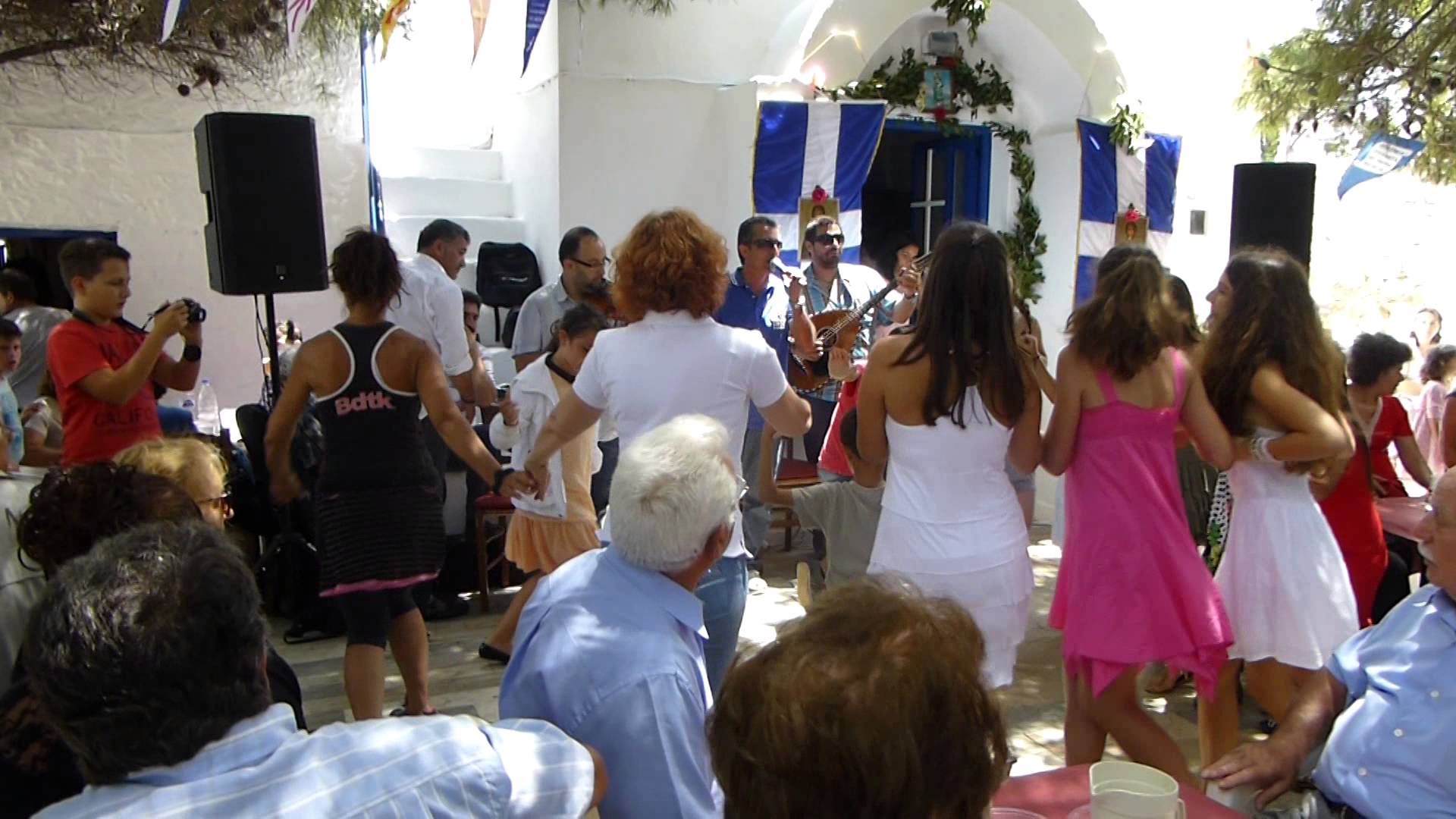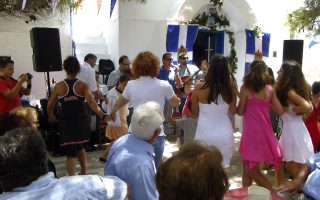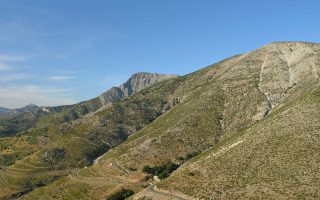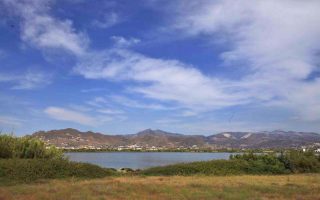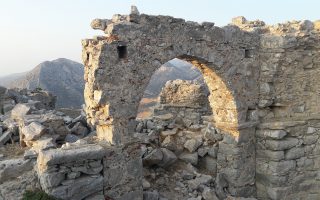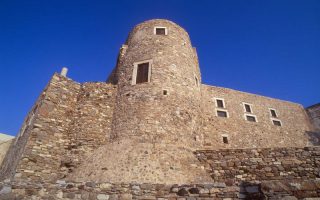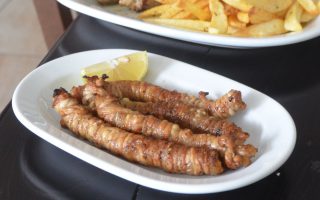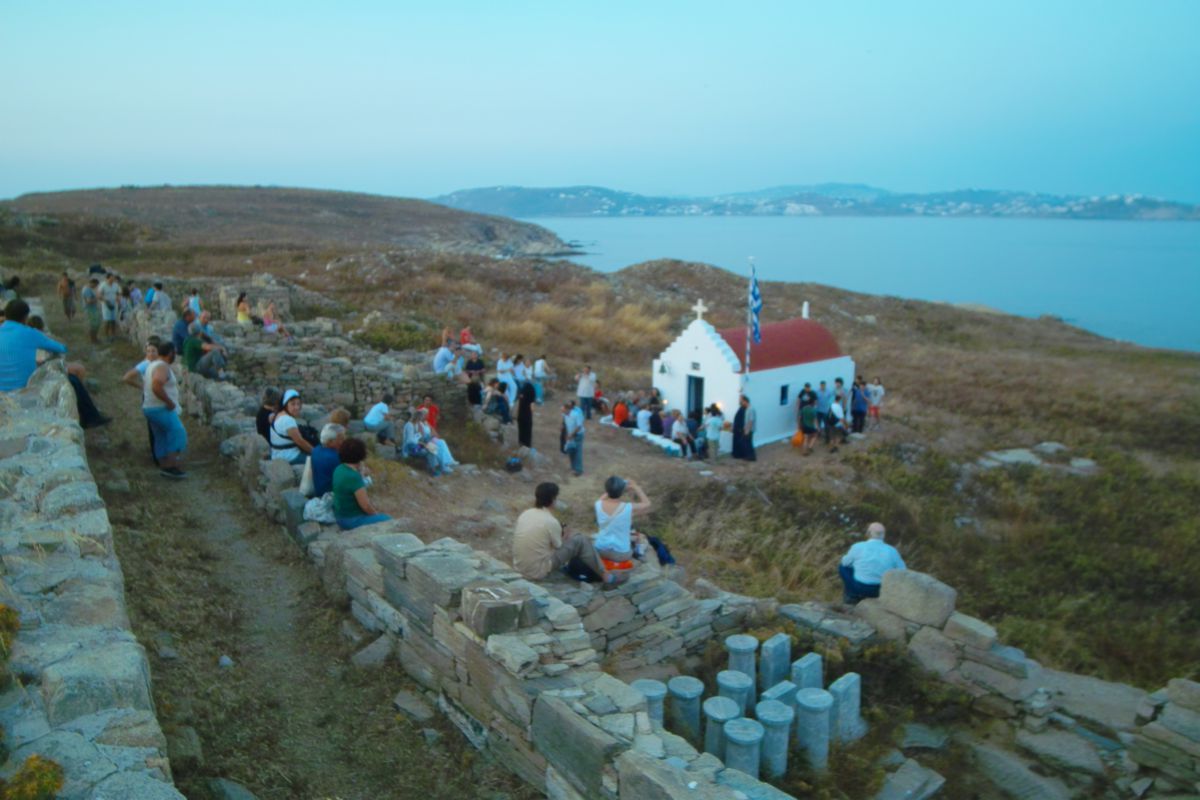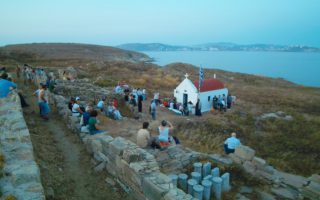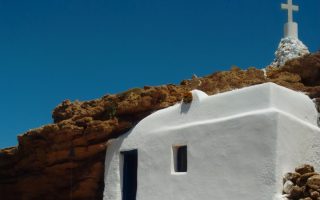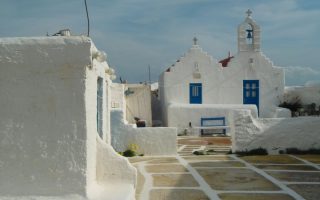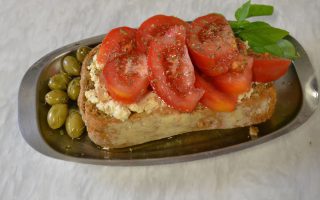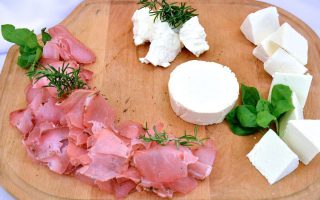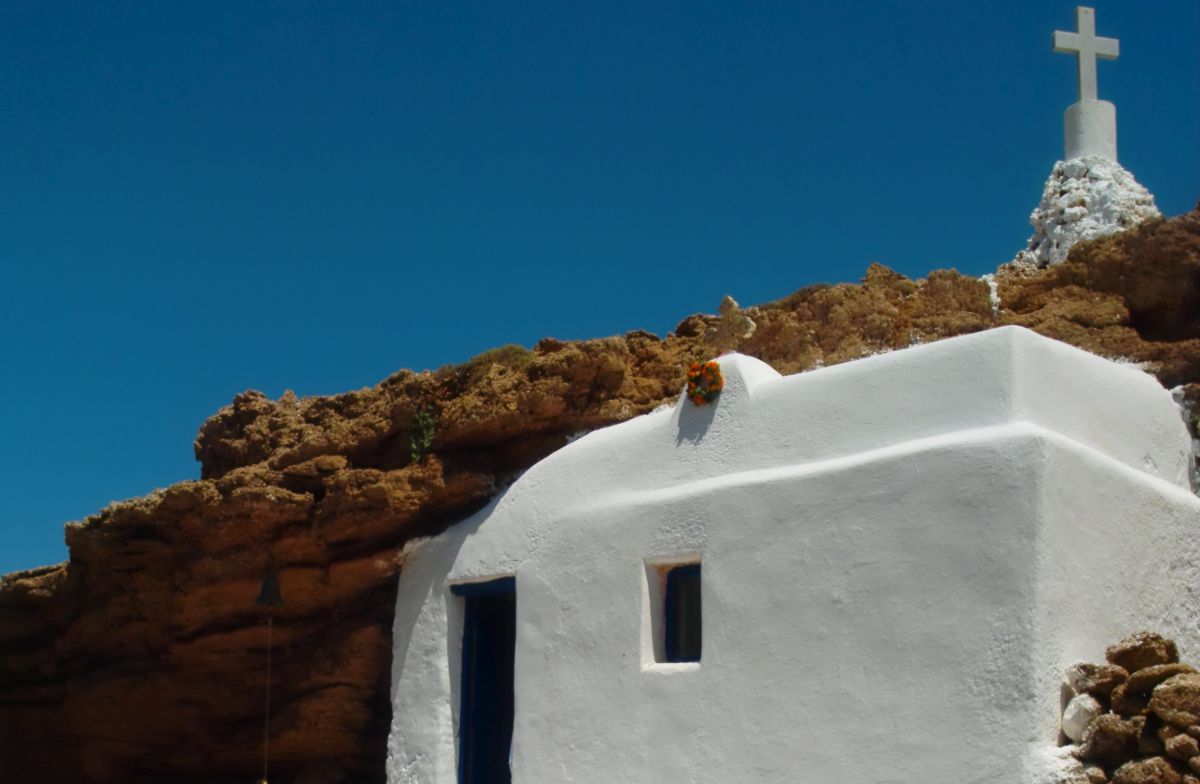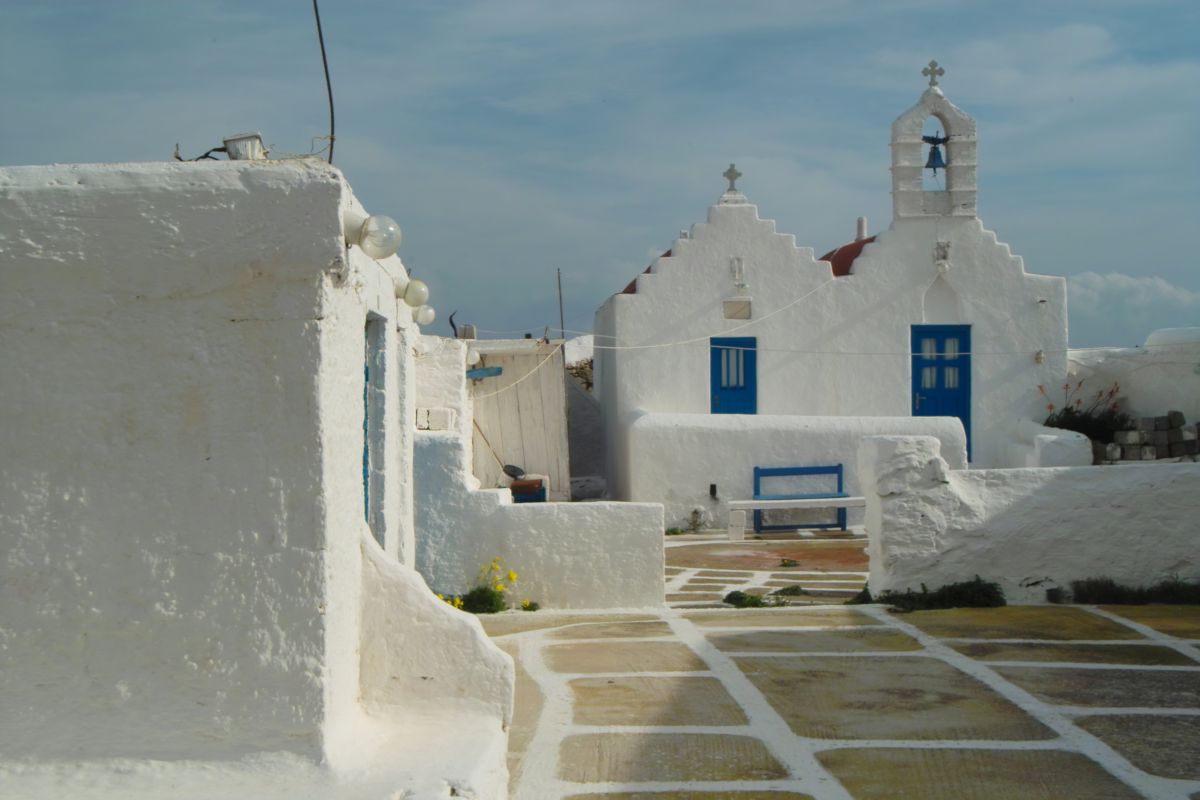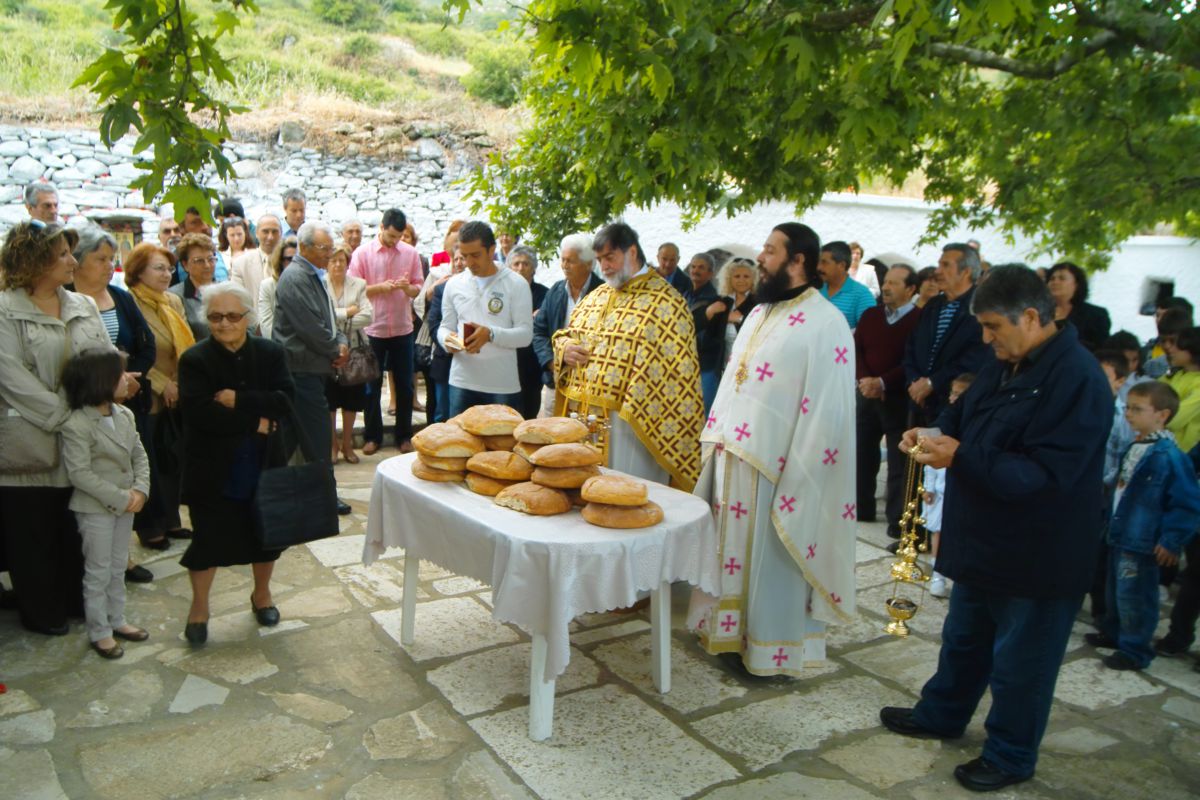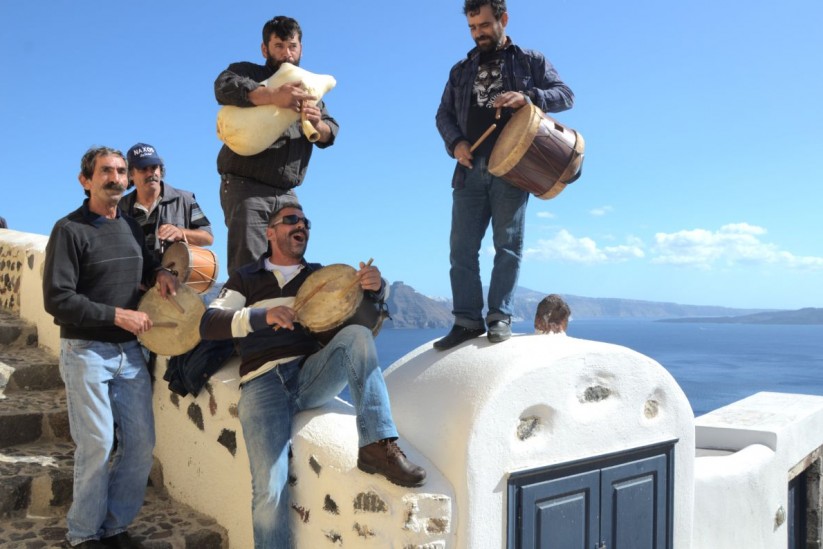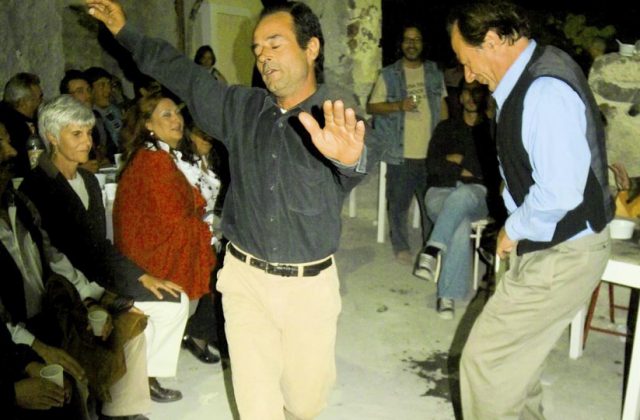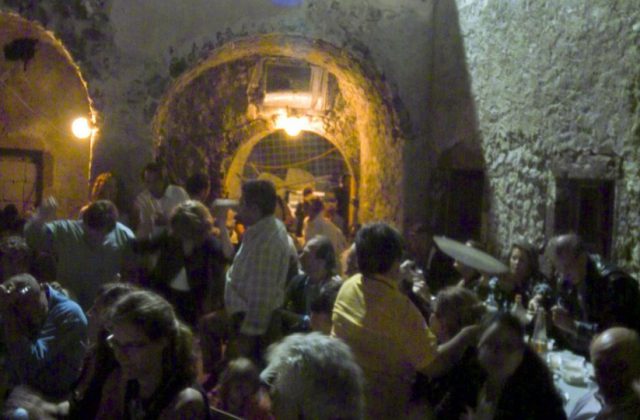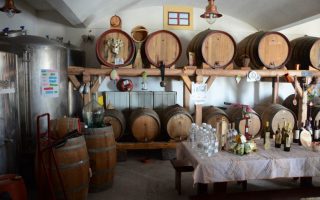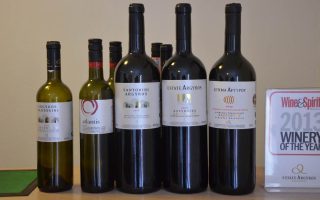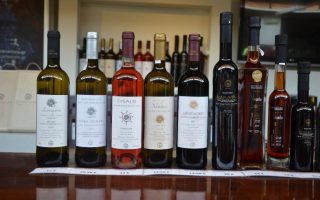Music, dancing with traditional costumes, songs, arts, feasts and festivals are part of the Naxian daily life. The island is famous all over Greece for its rich musical tradition and there are important composers/musicians from Naxos, including Konitopouleoi, Fyrogenides, Stamatonanolides, Vrontogiorgides, Koukoularides, Hatzopouloi. “Kotsakia” (folk poems of two or eight verses that were created in times of joy or sadness and could be instantly sung) are well-known thoughout Greece. In many feasts and festivals organized on the island, it is necessary to have local musical instruments, such as “tzampouna” and “ntoumpaki”, to accompany the celebration.
Especially the mountainous villages of Naxos have a great musical tradition (Apeiranthos, Kinidaros, Koronos, Filoti).
Festivals
Theoskepasti, in Komiaki and Potamia (September 8)
Panagia Drosiani, in Moni (September 8)
Timios Stavros (Holy Cross), in Tripodes and Moni (September 14)
Agios Nikolaos, in Kinidaros (December 6)
Agios Thalalaios, in Thalalaios (May 20)
Panagia Argokoiliotissa, in Koronos (Holy Friday)
Agii Apostoli, in Melanes (June 30)
Agia Kyriaki, in Potamia (July 7)
Agios Prokopios, in Prokopios (July 8),
Agios Nikodimos, in Chora and Glinado (July 14)
Agia Paraskevi, in Kinidaros (July 26),
Sotiros, in Glinado, Damarionas and Koukounochori (August 6)
Panagia, all over the island, especially in Filoti (August 15)
The Novena of the Virgin, in Tripodes (August 23)
Agios Ioannis, in Apeiranthos, Apollonas and Agersani (August 29)
Celebrations
Carnival: The celebration culminates in the last days before Clean Monday and many people are dressed up in memory of the Dionysian festivals. Characteristic figures are “koudounatoi” in Apeiranthos and “foustanellatoi”.
Ai Giannis: Jumping over the fires – to make the evil spirits and the diseases go away – is characteristic of the feast of Agios Ioannis (June 23) in Klidonas. Housewives prepare salty pies, which are considered to have “magical powers”.
Stavrou (Holy Cross): The good harvest is important for the residents of Galanado, who in the feast day of Timios Stavros (Holy Cross, September 14) leave out of the church a few seeds wrapped in a cloth, so as for the priest to bless them.
Trygos (vine harvest): It is a special celebration for the inhabitants of the island in the autumn. The barrels are washed and grapemust is collected to go to the presses. The pressed grapes (tsamboura) left in the barrel are used for raki: Rakitzia is an occasion for people to gather, sing, eat and have fun.
Source: aegeanislands.gr
The whole island of Delos – the best preserved ancient city in Greece – has been declared an archaeological site and any visit to it has to conform to certain rules and regulations. No one is permitted to stay on the island in the late afternoon to enjoy the sunset and spending the night there is even more strictly forbidden, except once a year, on the eve of Agia Kyriaki (Saint Kyriaki)’s day, the 7thof July.
Agia Kyriaki is a small chapel that was built in the 19th century so that the men working on the archaeological excavations would have a place to worship. It is located on the east coast, directly opposite Mykonos. On the day when the saint is celebrated, the island’s guards and their friends from Mykonos honour her memory with a service followed by a festival, an amazing party.
Newly white-washed for the occasion, the chapel of Agia Kyriaki is so tiny that it’s doubtful whether ten people can squeeze in so the faithful gather outside in its flag-decked courtyard.
Μore at Greek Gastronomy Guide…

Source: www.greekgastronomyguide.gr
In just a few lines Michalis Kounenis from Mykonos, known as Babelis, the top bagpipe player of the Cyclades, paints a loving picture of the feast of Tragonisi.
The church of the Virgin Mary’s feast day falls on that of Saints Barnabas and Bartholomew, the 11th of June. Departing from Kalafatis, in half an hour you arrive at a little inlet, somewhat protected from the north wind. Tall cliffs surround you, inaccessible shores, no sign of a pier.
After the craft tie up onto the rocks, one next to the other, unloading begins and the first hundred metres are not the easiest. Sheer slopes, sharp rocks, slippery pebbles, minimal progress. After half an hour’s walk, the chapel appears, a tiny white building perched on a red boulder between two hanging caper bushes, the only hint of greenery on the island. The priest and chanters barely fit inside and the entire flock stands outside. The chanting echoes through the ravine: “The rich went bankrupt and hungry…”.
Μore at Greek Gastronomy Guide…
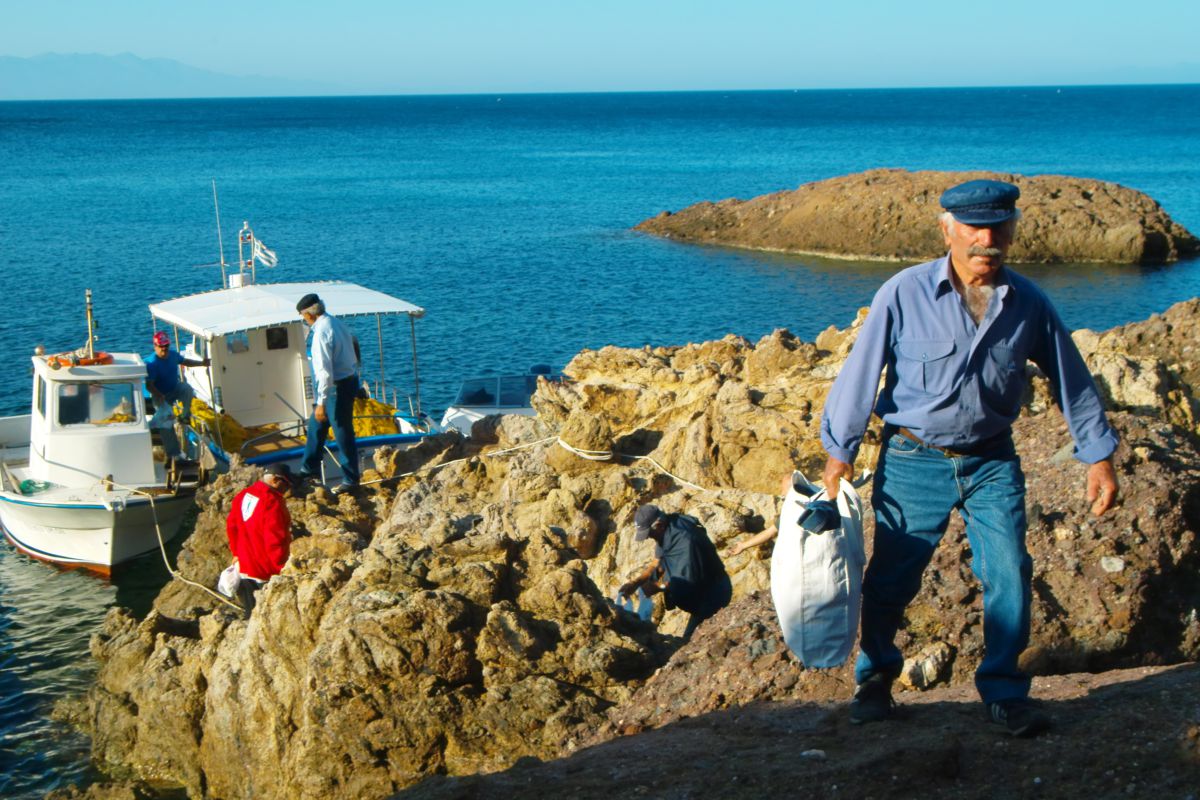
Source: www.greekgastronomyguide.gr
My friends are rendered speechless, those who will listen to me at least, when I tell them that the festivals of Mykonos are among the most vibrant in the Aegean. They can’t grasp that behind the ‘lifestyle’ façade of the island lies authenticity and that the people of Mykonos still value their festivals.
The religious character of the festivals of Mykonos does not differ much from that of the other Aegean islands. In the days before the feast the churches are whitewashed and decorated with flags, the brass is polished and decorated. On the eve everyone lights candles while the faithful who come by are immersed in the scents of basil and flowers.
Μore at Greek Gastronomy Guide…
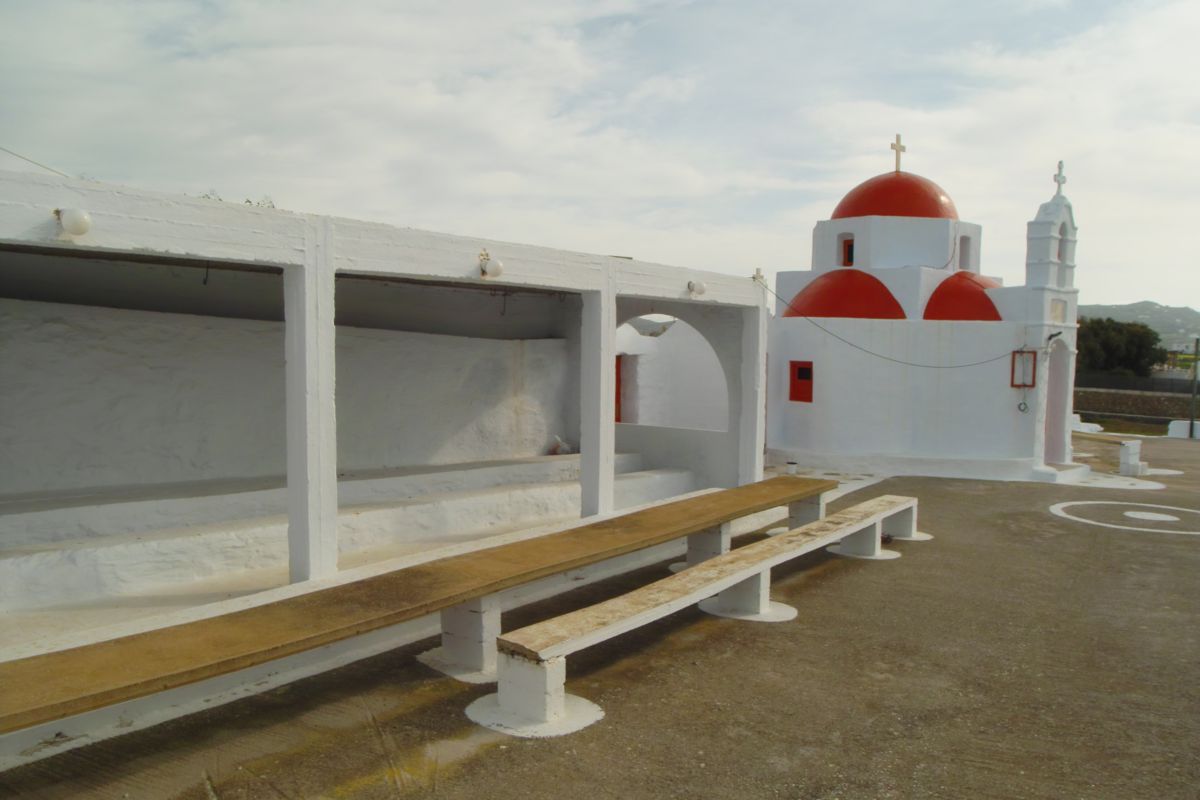
Source: www.greekgastronomyguide.gr
A landscape of riotously grown plane trees, flowing springs and small vegetable groves and vineyards growing supported by dry-stone walls is the scenery housing the village of Komiaki in Naxos built in amphitheatric fashion at 550 above sea level overlooking the Icarian Sea. The village had 2,000 inhabitants in the past but nowadays, it only counts 500.
The precious little religious fete (panigyri) in the honor of the two saints is celebrated in front of two one-aisled vaulted small churches, built one next to the other. The church with an orientation at the north is dedicated to Zoodochos Pigi (Virgin Mary, the Live-giving Spring) and the one with an orientation at the south to Agios Konstantinos and Agia Eleni. The religious festival is held at just 2 km away from the village, on the side of the rural road, on a clearing resembling to a village square that is protected under the leafage of four gigantic plane trees.
Μore at Greek Gastronomy Guide…
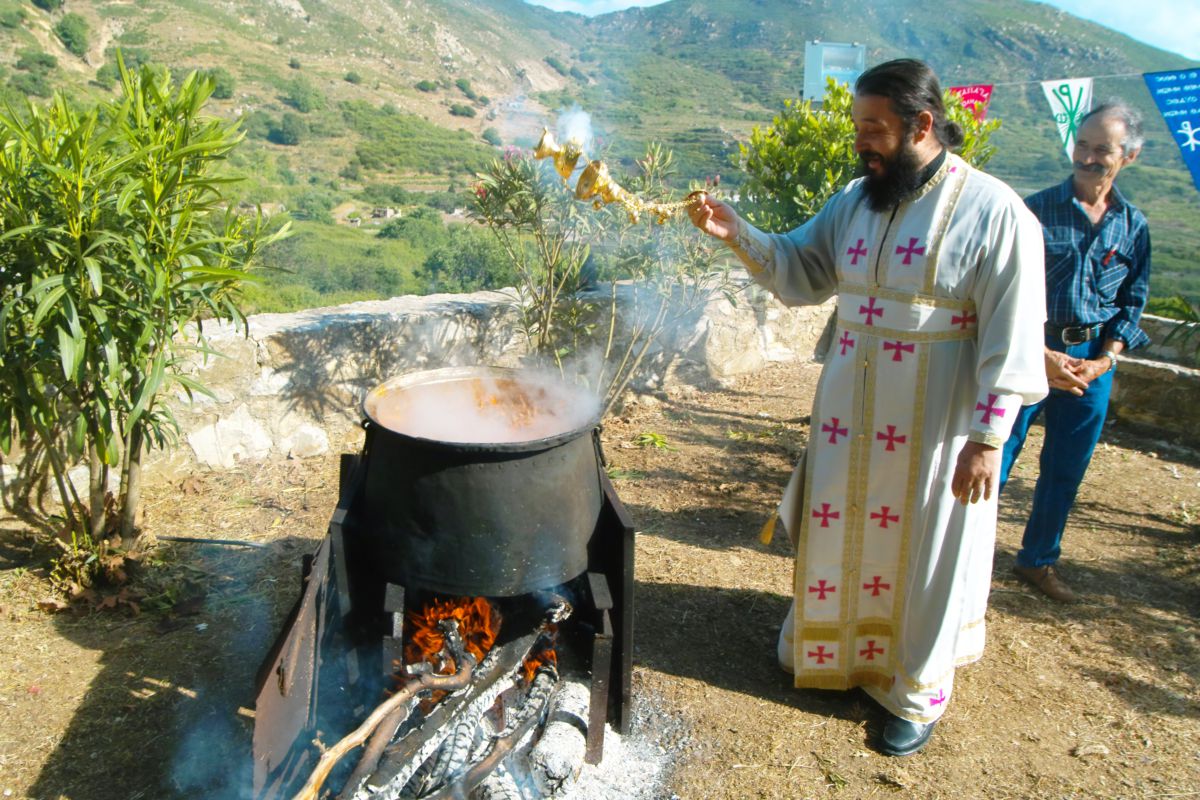
Source: www.greekgastronomyguide.gr
The church of Agia (Saint) Matrona with its characteristic palm tree lies to the east of the main street in Phoenikia on Santorini and was built in 1859 by Frangisko Plati, a shipowner from Oia. In the old days Phoenikia was the farmers’ quarter of Oia. But here one also found the kanaves (cellars) belonging to Oia residents and the ruling class who stored their wine barrels, farming equipment and quite often even their livestock in these impressive enormous underground spaces. In the beginning of the 20th century there were more than 150 of these kanaves, but they were abandoned after the war. Today many have been transformed into pensions, while others remain abandoned; very few are still used for storage.
The feast day or panigyri of Agia Matrona in Phoenikia takes place on October the 20th, after the hordes of tourists have departed and the local population can have some fun amongst themselves.
Μore at Greek Gastronomy Guide…
Source: Greek Gastronomy Guide

